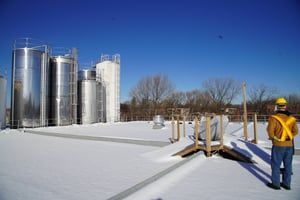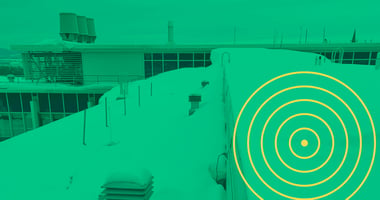Snow On Roofs: 3 Factors that Affect the Load
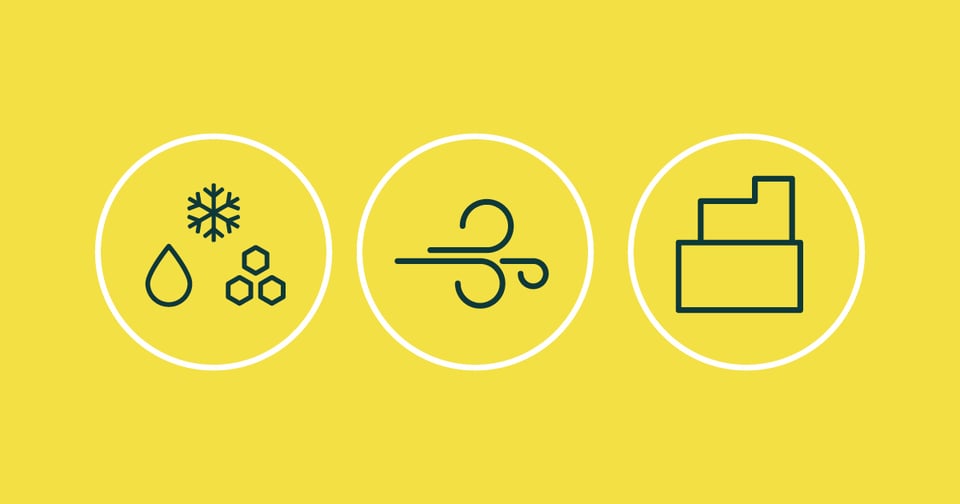
Deciding whether it's time to plan a snow removal operation for your building's roofs can quickly become a real headache.
Am I clearing too much snow? Am I clearing too little? Without reliable data to rely on, it's hard to know what's really happening on the roofs of your buildings.
And, contrary to popular belief, snow height is far from being a trustworthy indicator.
Here, we present three important factors related to snow load, which can impact the level of stress on a building's roof structure.
1. Variations in Regional Meteorological Precipitation
Do You Think the Amount and Nature of Precipitation Between British Columbia and Ontario Differ?
The answer is yes.
In Canada, local realities lead to a wide variation in snow loads from one region of the country to another, as reflected by these three indicators:
- Amount and type of precipitation (rain and snow)
- Wind speed and direction
- Temperature
For example, some regions tend to experience heavy snowfalls that are then blown away by the wind, while other regions experience less precipitation that tends to accumulate more because there is less wind.
Climate Has a Significant Impact on Snow Density
In addition to precipitation and wind, temperature also plays an important role in live load. On milder days, for example, warmer temperatures can melt the snow already accumulated on the roof, without draining the water, only to transform it into ice as the weather cools.
Also, wet snow doesn't blow away as well with the wind as light snow! And, in colder weather conditions, snowfall is generally lighter, whereas under warmer conditions, it's more likely to be wet, and therefore heavier as soon as it hits the ground.
Equal Quantity, Equal Weight? Not Quite!
For the same amount of accumulation, water and ice are heavier than light snow, which inevitably has an impact on the level of stress put on building roof structures from region to region, for the same snow height. National Building Code requirements for roof design loads therefore vary according to your region.
In fact, snow height is not a good indicator since, for the same height, snow can have a greater or lesser weight, from one year to the next, from one day to the next and even from one roof section to the next.
On the other hand, the snow height method does not consider one-off events, such as storms, which can lead to spontaneous accumulations of densities completely different from those of the snow already present on the roof.
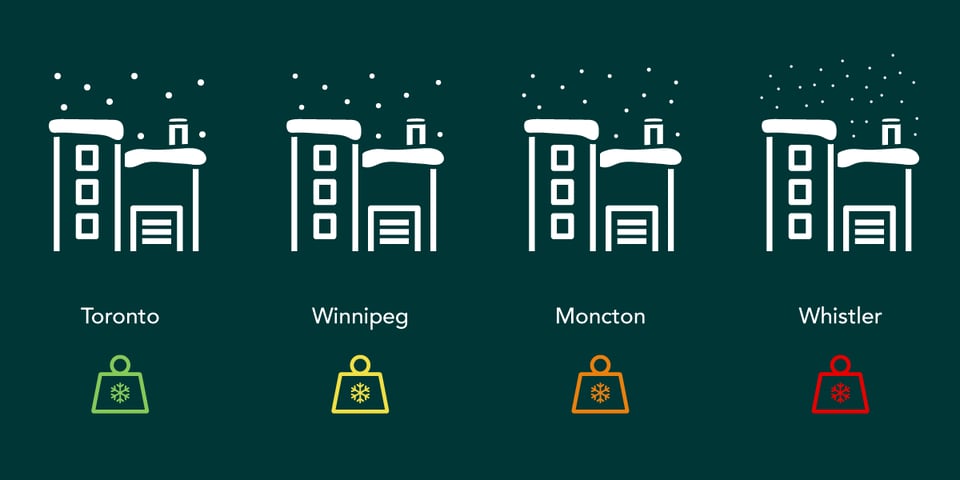
TIf you compare the total annual ground accumulations between Toronto and Vancouver, you'll see that it snows 3 times more in the Vancouver area than in Toronto.
This just goes to show how the nature of the precipitation can impact the weight on a roof.
See Also: Why 3 Feet of Snow on a Building Roof Has a Much Greater Impact in Toronto Than in Vancouver
2. The Building’s Exposure to Wind
Wind is also an important factor, since wind speed and direction can influence the distribution of snow loads on different roof sections of the same building.
Observations in many parts of Canada have shown that when the roof or part of the roof of a building is fully exposed to the wind, a portion of the snow is blown away and cannot accumulate, thus reducing the average snow load.
Moreover, blown snow is generally denser than snow that has not been compacted by the wind.
Is Your Building Surrounded by Wind Barriers?
The snow load can be 25% lower for roofs that are fully exposed to the wind, i.e., when the building is located on a flat, open site or adjacent to a shoreline, and when the roof surface in question is exposed to the wind on all sides. Conversely, the presence of significant obstacles, such as trees or a parapet, is conducive to accumulation.
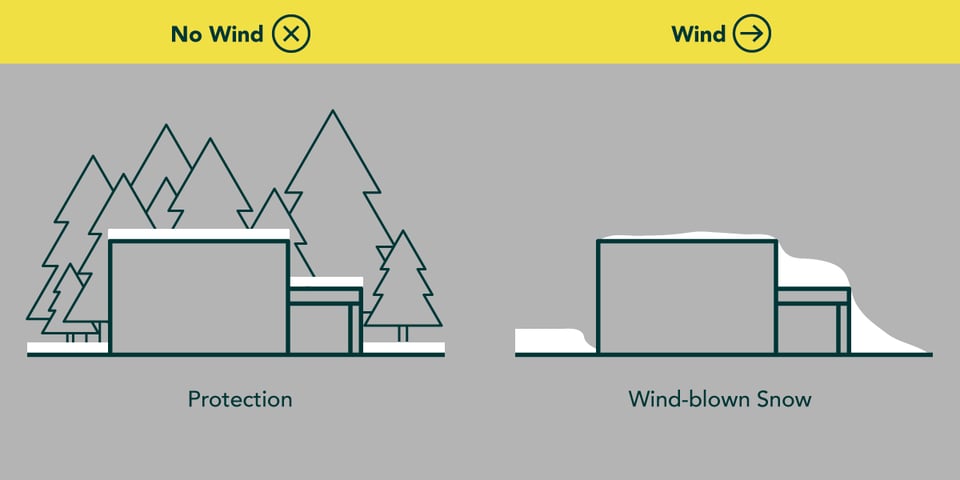
This phenomenon is particularly prevalent on buildings bordering bodies of water, since there is nothing to cut the wind, thus reducing the snow load on the roofs of nearby buildings. This is particularly true of buildings near the St. Lawrence River in the Province of Quebec, for example.
Buildings located near large fields, such as those found in agricultural areas, are also likely to see their snow load vary with the wind for this same reason.
On very large roofs with variable geometry, a phenomenon of load shifting rather than total load reduction can sometimes be observed. As these roofs are so large, the wind tends simply to move the snow over them, rather than sweeping it down to the ground.
Obstacles on the Roof of a Building
When the wind encounters obstacles, such as a mechanical unit or a change in elevation, for example, its flow is altered. Its speed changes, and areas of turbulence can appear, encouraging snow to pile up around these elements.
Wind Exposure Can Also Vary Over Time
Bear in mind that several factors can influence the distribution of snow loads from one winter to the next over time, such as:
- Adding or removing equipment on the roof
- Growth of nearby trees
- Construction of highrise neighbouring buildings
The Impact of Building Modifications on Snow Loads
A building modification, such as an extension or demolition, can greatly influence snow accumulation on the roof, since it can alter not only wind exposure, but also the geometry of the roof itself.
It is therefore important to seek the advice of structural engineers to assess the impact of these modifications on snow loads.
What's more, the weather forecasting model used in the Tensio solution considers not only snow and rainfall, but also other factors such as temperature, wind speed and direction.
3. The Geometry of a Building’s Roof
Roof geometry has a major influence on snow accumulation. Snow distribution will differ between a multi-sloped roof, for example, and a vaulted roof (round roof) or a flat roof.
There are an infinite number of roof configurations, and each has its own influence on snow accumulation. Wind also plays an important role in snow accumulation on roofs of different types.
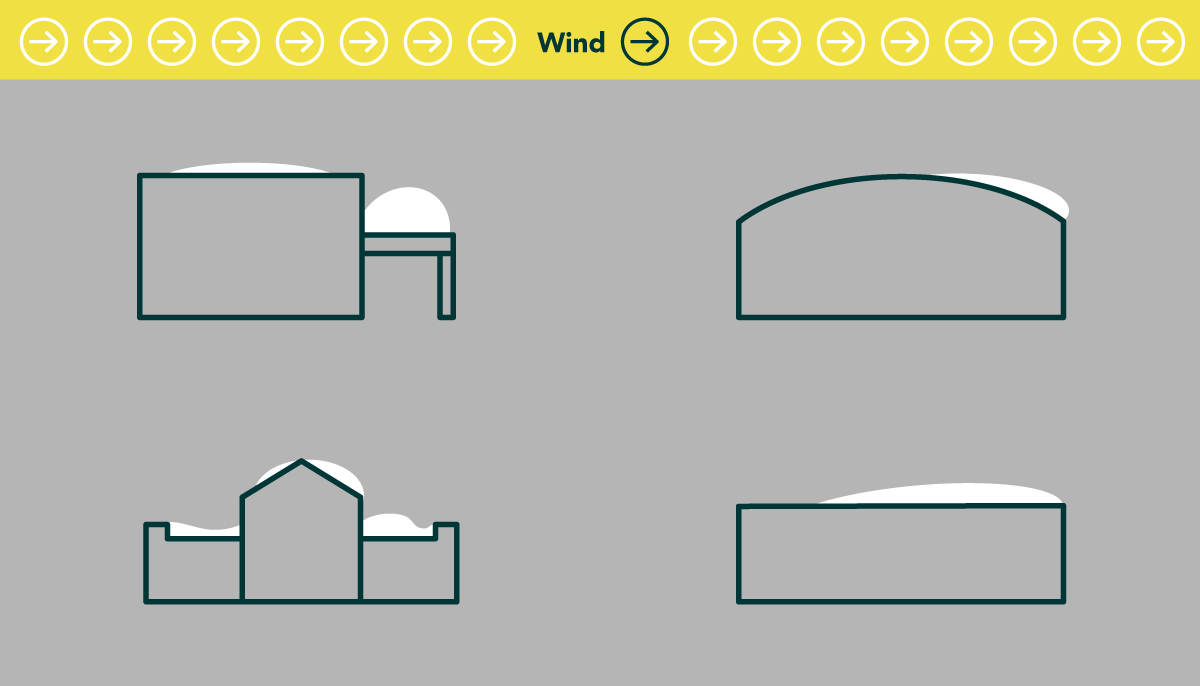
Automate Your Roof Monitoring Thanks to Technology
All the elements mentioned in this article may seem burdensome and energy-consuming to manage daily during the winter, and it's precisely to simplify this management that we've designed the Tensio system.
Regardless of the level of precipitation in your area, your building's exposure to the wind, or the geometry of your roof; Tensio can tell you if and when it's time to clear the snow from your building's roof.
Let Tensio monitor your roof 24/7, so you can concentrate on your real value-added tasks, request your personalized demo today.
__
Sources:
%20(2).png?width=150&height=50&name=Tensio_Logo-SansPositionnement_RVB%20(1)%20(2).png)




